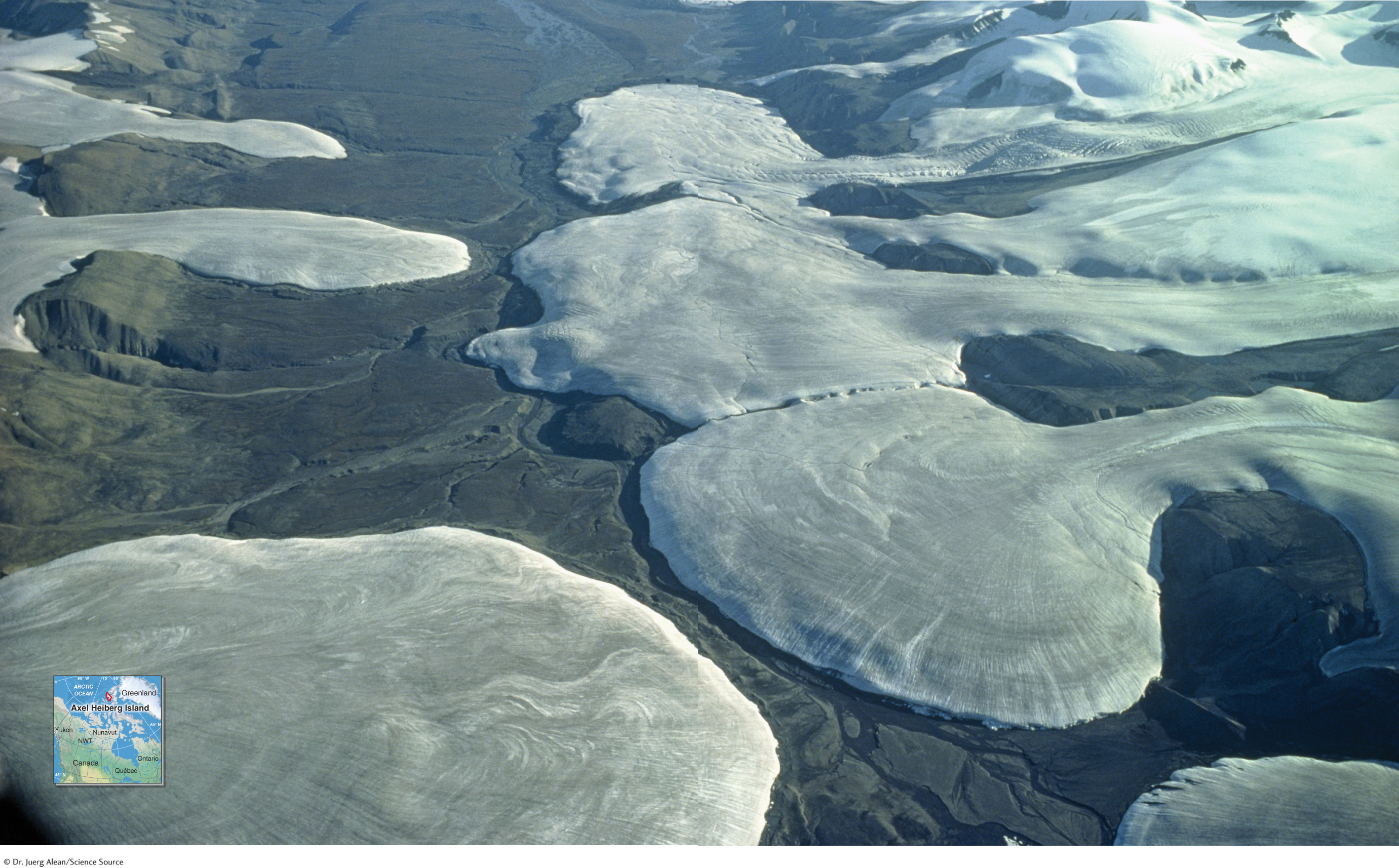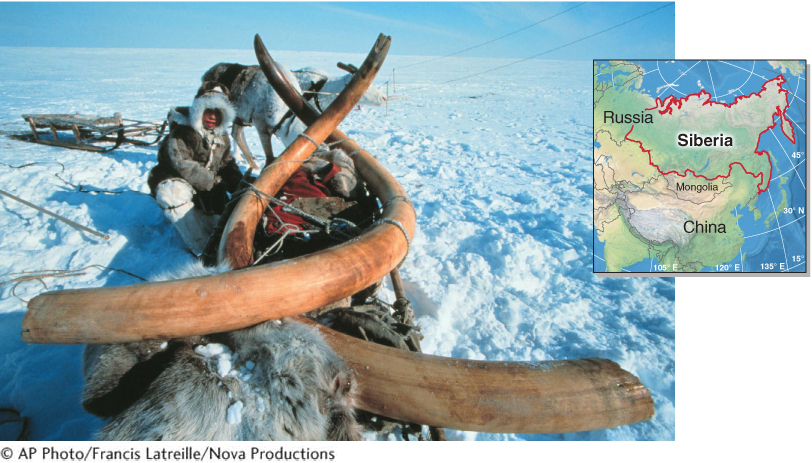THE WORK OF ICE: The Cryosphere and Glacial Landforms
17

LIVING PHYSICAL GEOGRAPHY
Why are bones and tusks of extinct mammoths appearing throughout Siberia?
Why are explosive gases seeping from Arctic lakes?
How do glaciers form?
How does the soft ice of a glacier carve into solid bedrock?
How did Yosemite Valley form?
THE BIG PICTURE
Perpetually frozen ground and glaciers create unique landforms. The loss of ice on Greenland and Antarctica could cause significant sea-
LEARNING GOALS
After reading this chapter, you will be able to:
17.1
Identify features unique to areas with permanently frozen soils and explain environmental changes taking place in those areas.
17.2
Explain how glaciers form and move and describe different glacier types and their geographic settings.
17.3
Explain how glaciers cut into rocks and identify landforms caused by glacial erosion.
17.4
Identify landforms created from glacial sediments and explain how they formed.
17.5
Assess the role of polar ice sheets in current and future sea-
level changes and explain why sea- level rise presents problems for human society.
THE HUMAN SPHERE:
The Mammoth Hunters
FOR 5 MILLION YEARS, the woolly mammoth (Mammuthus primigenius)—a close relative of the modern African elephant—
Question 17.1
Why are bones and tusks of extinct mammoths appearing throughout Siberia?
When ancient mammoths died, their bones were preserved in frozen northern soils. Now, as the soils thaw, the bones are being exposed.
The remains of some mammoths have been preserved in the frozen northern soils. Now the cryosphere—

This chapter explores the cryosphere, in the context of both landforms and changing climate. We first explore periglacial landscapes, those that are unglaciated but perpetually frozen. We then examine how glaciers develop and begin moving, and we visit landforms resulting from the movement of glaciers. Finally, we explore Earth’s two enormous ice sheets, on Greenland and on Antarctica, and their current and projected contributions to sea-